‘‘Mementos’’ at the Royal Belgian Institute of Natural Sciences (No.40)
I would like to wish a Happy New Year. There are tremendous obstacles, be it political or economic, when we look at the world. However, I hope that this year might be slightly better. For Japan it is said, this year will show the fruit of the so called ‘abenomics’ and in Europe all attention is focused on whether the economy will return back to normal. Belgium will see general elections, which are said will heavily shift the focus of the country. Attention is also focused on the developments of the political situations in East-Asia. I hope I am able to say, reflecting back in a couple of years that 2014 was a turning point. I have been in Belgium for a year and three months now, since October of 2012. In the case of the Japanese ambassadors there is not a set term of office. Therefore it is impossible to know how long and where one will end up next. I feel however I am closing in to a point of return. There are limits to what an ambassador can do, but I hope to spend a fulfilling 2014 similarly with a turning point. I am hopeful that the readers of this Chat of the Ambassador will continue to follow it and encourage me for a year to come.
<To Japan after 78 years. A collection in keeping of emperor Hirohito >
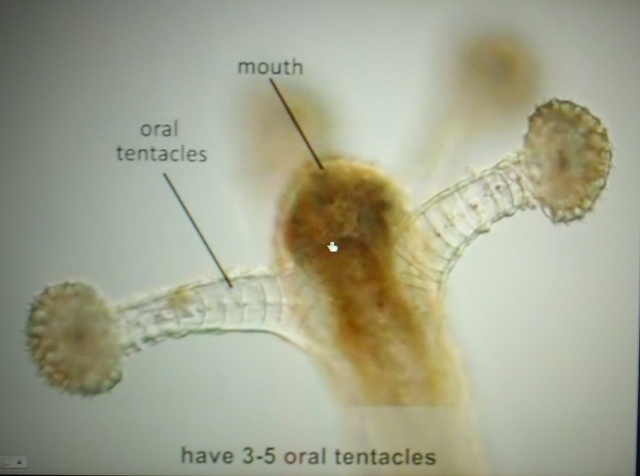  The Royal Belgian Institute of Natural Sciences in Brussels has been preserving more than twenty hydrozoa specimen collected by the Sagami bay near Tokyo, and sent to Belgium from emperor Hirohito in the mid 1930’s. These were sent over from Japan to commission the classification and peculiarities of the species. It was the perfect job for the Belgian Ph. D. Eugene Leloup, the leading world authority of that time on hydrozoa. As a result, several new species were discovered and were named after emperor Hirohito. The Belgian side was supposed to send the specimen back after finishing the commission, but as the Second World War erupted at that very moment, they could not be returned. After the war, the existence of the specimen was forgotten, perhaps due to change or removal of the person occupied with the specimen. Last year however, after a young researcher at the institute had discovered these specimens, the wheels of handing them back to Japan (Showa Memorial Institute) were set in motion. I visited the Royal Belgian Institute at the end of last year and viewed the hydrozoa collection of emperor Hirohito. I also got to see the correspondence letters during the commissioning. This institute houses over 30 million samples of numerous organisms and I felt that the discovery of the Hirohito collection was almost a miracle. These were recently to be returned to Japan through a diplomatic channel. It has been seventy-eight years since they first were sent over from Japan in 1936, now returning home. At that time Albert de Bassompierre was the Belgian ambassador to Japan. Today his great-grandson, Christophe de Bassompierre works as minister-counsellor at the Embassy in Tokyo. It is as if his legacy was continued. The Royal Belgian Institute of Natural Sciences in Brussels has been preserving more than twenty hydrozoa specimen collected by the Sagami bay near Tokyo, and sent to Belgium from emperor Hirohito in the mid 1930’s. These were sent over from Japan to commission the classification and peculiarities of the species. It was the perfect job for the Belgian Ph. D. Eugene Leloup, the leading world authority of that time on hydrozoa. As a result, several new species were discovered and were named after emperor Hirohito. The Belgian side was supposed to send the specimen back after finishing the commission, but as the Second World War erupted at that very moment, they could not be returned. After the war, the existence of the specimen was forgotten, perhaps due to change or removal of the person occupied with the specimen. Last year however, after a young researcher at the institute had discovered these specimens, the wheels of handing them back to Japan (Showa Memorial Institute) were set in motion. I visited the Royal Belgian Institute at the end of last year and viewed the hydrozoa collection of emperor Hirohito. I also got to see the correspondence letters during the commissioning. This institute houses over 30 million samples of numerous organisms and I felt that the discovery of the Hirohito collection was almost a miracle. These were recently to be returned to Japan through a diplomatic channel. It has been seventy-eight years since they first were sent over from Japan in 1936, now returning home. At that time Albert de Bassompierre was the Belgian ambassador to Japan. Today his great-grandson, Christophe de Bassompierre works as minister-counsellor at the Embassy in Tokyo. It is as if his legacy was continued.
<Is Nikon a measuring instruments company?>
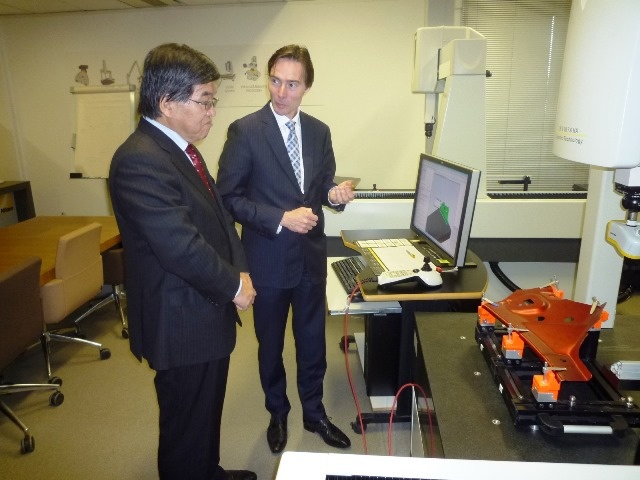 At the end of last month I visited Nikon Metrology in Leuven. Whilst looking up the business model of the company, I had presumed it was a photo camera company. However I realized I could not be farther from the truth. This company (with 550 employees) was established in 2009 by the Nikon’s purchase of Metris, a spin-off company of the Catholic University of Leuven (established in 1995), manufacturing and selling measuring instruments for quality control. Nikon had been making precision, small scale quality control instruments up till then, but with the acquisition of Metris, it became possible to expand their line-up towards products able to measure large-scale products such as aircraft parts. Nikon Metrology in Leuven (107 employees) functions as its main office and has manufacturing sites in Derby and Tring, United Kingdom. During my visit at Nikon Metrology I got to see a demonstration of their latest measuring instrument. I was surprised by this instrument which could make measure convex and concave parts and spherical surface by operating an automatic controlled microscope. Separated from the top part, it calculated measurements in three-dimensions in high speed (measuring 70,000 individual points per second) and this data was stored on a computer through a laser scanning technique. The inside, although an intricate solid structure, could also be measured by using x-rays from the outside as it was a non-destructive measurements apparatus. By merging Nikon’s lens manufacturing and Metris’s measuring techniques, Nikon Metrology is perhaps one model case of future partnerships between Japan and Belgium. At the end of last month I visited Nikon Metrology in Leuven. Whilst looking up the business model of the company, I had presumed it was a photo camera company. However I realized I could not be farther from the truth. This company (with 550 employees) was established in 2009 by the Nikon’s purchase of Metris, a spin-off company of the Catholic University of Leuven (established in 1995), manufacturing and selling measuring instruments for quality control. Nikon had been making precision, small scale quality control instruments up till then, but with the acquisition of Metris, it became possible to expand their line-up towards products able to measure large-scale products such as aircraft parts. Nikon Metrology in Leuven (107 employees) functions as its main office and has manufacturing sites in Derby and Tring, United Kingdom. During my visit at Nikon Metrology I got to see a demonstration of their latest measuring instrument. I was surprised by this instrument which could make measure convex and concave parts and spherical surface by operating an automatic controlled microscope. Separated from the top part, it calculated measurements in three-dimensions in high speed (measuring 70,000 individual points per second) and this data was stored on a computer through a laser scanning technique. The inside, although an intricate solid structure, could also be measured by using x-rays from the outside as it was a non-destructive measurements apparatus. By merging Nikon’s lens manufacturing and Metris’s measuring techniques, Nikon Metrology is perhaps one model case of future partnerships between Japan and Belgium.
By the way, the Japanese company Nikon started out during the First World War in 1917 as a munitions company at request of the Japanese government, to manufacture gunship artillery range meters and submarine periscopes. Manufacturing of cameras only began after the Second World War when the company converted to civil engineering business and started applying existing measuring technologies for that purpose. Nowadays, the camera world is digitalizing evermore and the struggle for a share in the market for manufacturers is also changing. However, Nikon and Canon continue to cover 85 to 90 percent of exchangeable ‘single-lens reflex’ high-end cameras of the market. Japanese analog technology of lenses production seem to be doing ever so well.
<International Kendo Championship in Belgium>
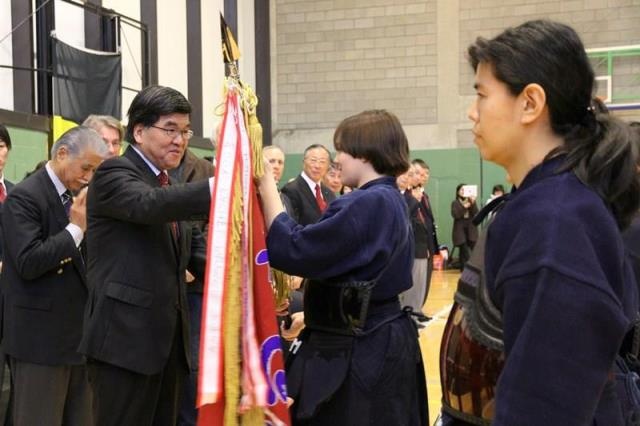 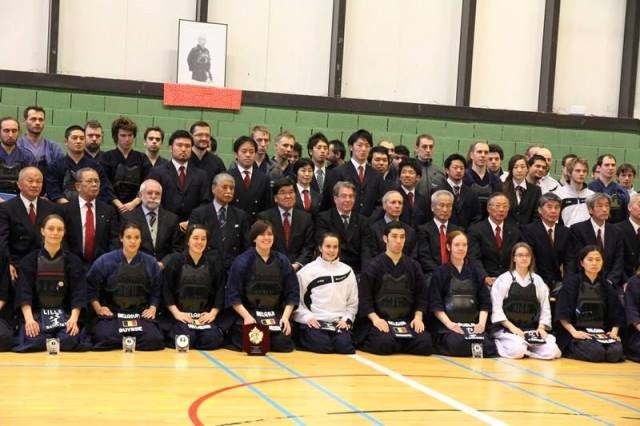 On a weekend late December, the International Goodwill Kendo Championship, organized by the All Belgium Kendo Federation, took place at the “Forêt de Soignes” Sport Centre in the suburbs of Brussels, where I watched the team competitions and the individual competitions. I awarded the championship pennant and commemorative plaques to the winning team and the individual winners. This championship was held on the last day of a 6-day Winter Seminar. A delegation of 20 instructors and active athletes, led by Senior Advisor Mr. Nobuo Hirakawa of the International Workers Kendo Club (NPO Corporation), came to Belgium to support the management of the tournament by the organizer, the All Belgium Kendo Federation. About 600 athletes are member of the Belgian Kendo Federation (by the way, in total 35.000 athletes are member of the European Kendo Federation) and there seem to be even 23 members with a 6th Dan or higher, making Belgium a strong country, second only to France in Europe. Nearly 100 athletes from 22 European countries participated in this championship and both in the team competitions and the individual competitions, the Belgians won. The Belgian girls that got the first and second place in the women’s division belong to a Kendo Club in Ghent and although still junior and high school students, they have great aspirations for the future. In the course of conversation with Alain Ducarme, President of the European Kendo Federation, who sat next to me, he was of the opinion that “Kendo in Japan is becoming more and more a sport, but in Europe, the original Kendo spirit of self-development is alive, so etiquette and good manners are considered very important.” I felt strange, being a bit happy and a bit sad. On a weekend late December, the International Goodwill Kendo Championship, organized by the All Belgium Kendo Federation, took place at the “Forêt de Soignes” Sport Centre in the suburbs of Brussels, where I watched the team competitions and the individual competitions. I awarded the championship pennant and commemorative plaques to the winning team and the individual winners. This championship was held on the last day of a 6-day Winter Seminar. A delegation of 20 instructors and active athletes, led by Senior Advisor Mr. Nobuo Hirakawa of the International Workers Kendo Club (NPO Corporation), came to Belgium to support the management of the tournament by the organizer, the All Belgium Kendo Federation. About 600 athletes are member of the Belgian Kendo Federation (by the way, in total 35.000 athletes are member of the European Kendo Federation) and there seem to be even 23 members with a 6th Dan or higher, making Belgium a strong country, second only to France in Europe. Nearly 100 athletes from 22 European countries participated in this championship and both in the team competitions and the individual competitions, the Belgians won. The Belgian girls that got the first and second place in the women’s division belong to a Kendo Club in Ghent and although still junior and high school students, they have great aspirations for the future. In the course of conversation with Alain Ducarme, President of the European Kendo Federation, who sat next to me, he was of the opinion that “Kendo in Japan is becoming more and more a sport, but in Europe, the original Kendo spirit of self-development is alive, so etiquette and good manners are considered very important.” I felt strange, being a bit happy and a bit sad.
<January 1927, A Funeral in the Snow>
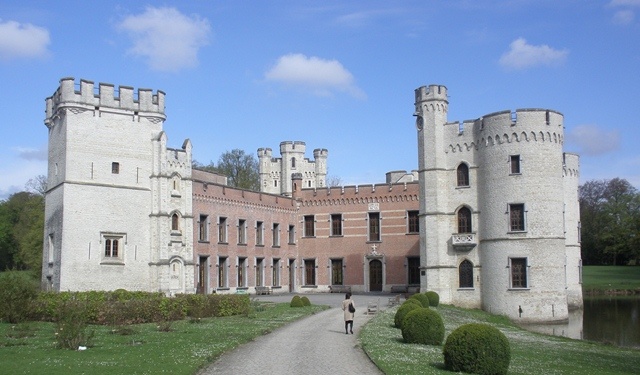 About 10km to the north of Brussels, still further north than the Royal Palace of Laeken, there’s a vast National Botanic Garden, which is referred to as the best in Europe. Over 1200 kinds of plants from around the world are growing on the ninety-three hectare site with forestry and ponds. The garden lends itself to a perfect place for a stroll in the right season. There are benches everywhere so you can just sit there and forget the time. A little to the west of the garden, on the banks of a pond there’s an old castle which is said to have been founded in the 12th century. The view is splendid! However, most people, even Belgians, have forgotten about the sad story that remains in this old castle called the “Castle of Bouchout”. In the first half of the 19th century, Belgium’s first King Leopold I had a daughter called Princess Charlotte, who married Archduke Maximilian of Austria in 1857 and later became Empress because the Archduke became the Emperor of Mexico. Unfortunately, Emperor Maximilian encountered a Mexican rebellion barely a few years later and was captured by the rebels. Empress Charlotte made a successful escape and tried to get assistance in Europe to no avail and Emperor Maximilian was shot dead in 1867. When Empress Charlotte heard this sad news, she suffered an emotional collapse. Thanks to the arrangements of her brother Leopold II, the second King of Belgium, she could live and receive medical treatment in the Castle of Bouchout. For most of 60 years, from the age of 27 until her death in 1927, she led a secluded life in this old castle. It makes you wonder about the meaning of Princess Charlotte’s life. It is said that the funeral of the princess took place in January in heavy snowfall, quietly, attended by the King and many members of the Royal Family. About 10km to the north of Brussels, still further north than the Royal Palace of Laeken, there’s a vast National Botanic Garden, which is referred to as the best in Europe. Over 1200 kinds of plants from around the world are growing on the ninety-three hectare site with forestry and ponds. The garden lends itself to a perfect place for a stroll in the right season. There are benches everywhere so you can just sit there and forget the time. A little to the west of the garden, on the banks of a pond there’s an old castle which is said to have been founded in the 12th century. The view is splendid! However, most people, even Belgians, have forgotten about the sad story that remains in this old castle called the “Castle of Bouchout”. In the first half of the 19th century, Belgium’s first King Leopold I had a daughter called Princess Charlotte, who married Archduke Maximilian of Austria in 1857 and later became Empress because the Archduke became the Emperor of Mexico. Unfortunately, Emperor Maximilian encountered a Mexican rebellion barely a few years later and was captured by the rebels. Empress Charlotte made a successful escape and tried to get assistance in Europe to no avail and Emperor Maximilian was shot dead in 1867. When Empress Charlotte heard this sad news, she suffered an emotional collapse. Thanks to the arrangements of her brother Leopold II, the second King of Belgium, she could live and receive medical treatment in the Castle of Bouchout. For most of 60 years, from the age of 27 until her death in 1927, she led a secluded life in this old castle. It makes you wonder about the meaning of Princess Charlotte’s life. It is said that the funeral of the princess took place in January in heavy snowfall, quietly, attended by the King and many members of the Royal Family.
|